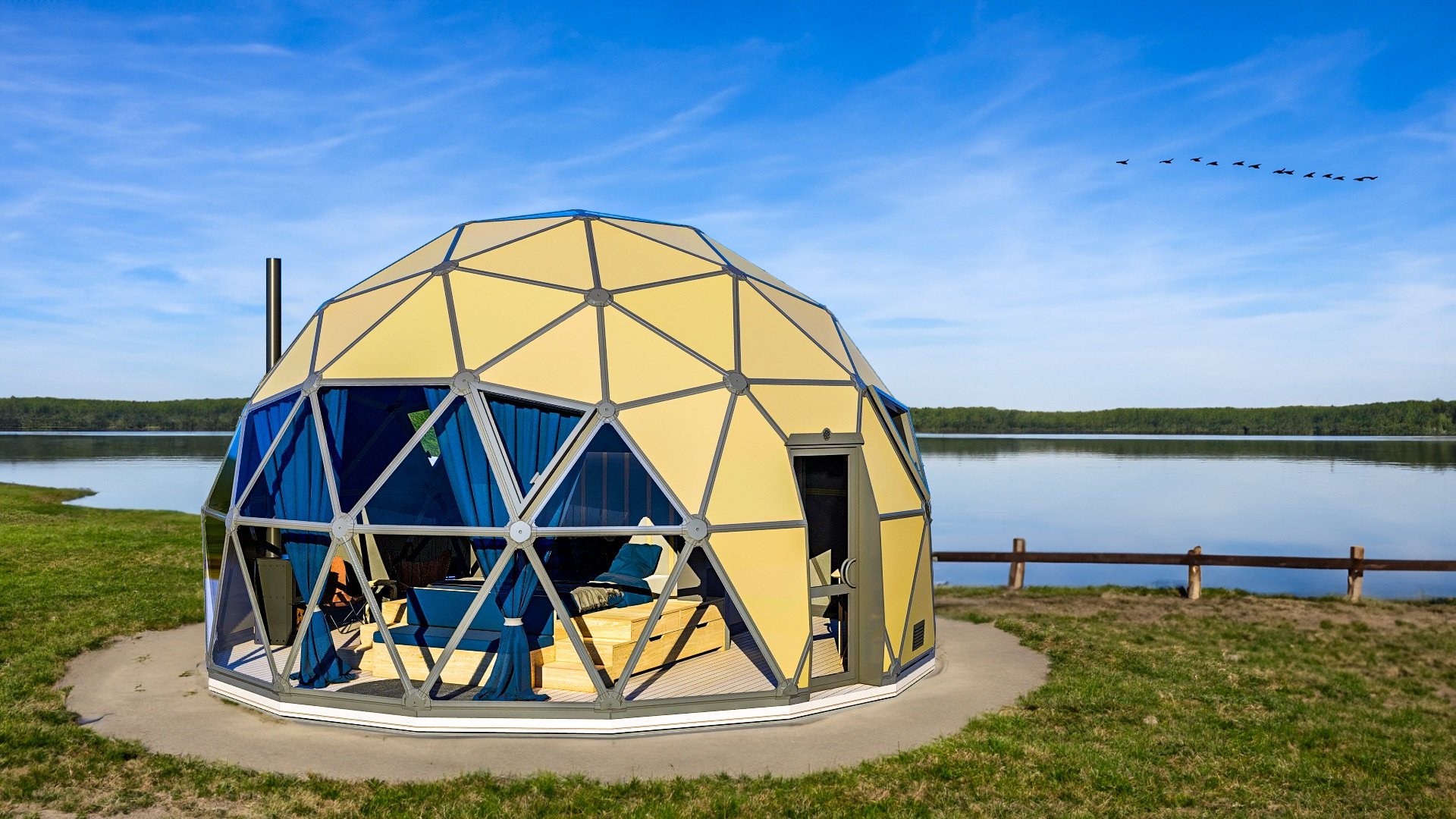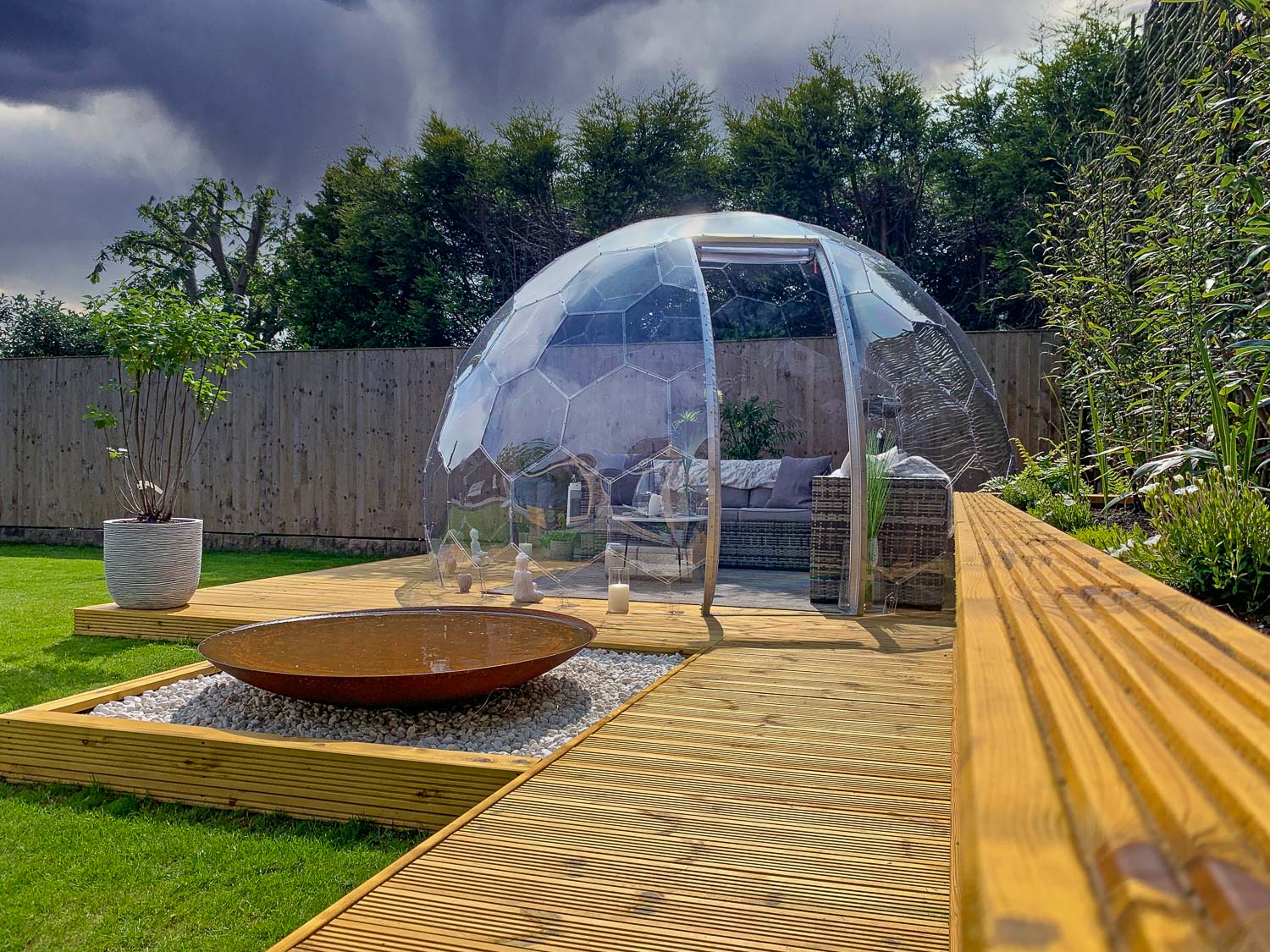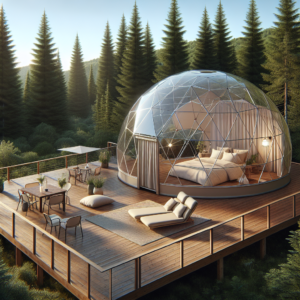Key Takeaways
Diverse geodome kits cater to unique project needs, from eco-homes to community spaces, offering tailored solutions.
Effective site and foundation planning are crucial, ensuring the geodome’s stability and alignment with environmental conditions.
Mastering the assembly process requires a systematic approach, from understanding universal principles to adapting to specific kit challenges.
Geodomes allow for extensive personalization and modern tech integration, enabling owners to craft spaces that reflect their lifestyle and sustainability goals.
Engaging with the geodome community and seeking expert advice can greatly enhance the assembly experience, fostering creativity and problem-solving.
The allure of geodesic domes has captivated DIY enthusiasts and homeowners, yet the perceived complexity of assembly has deterred many from pursuing these rewarding projects. In this comprehensive guide, we aim to demystify the process of DIY geodome construction. By addressing common challenges and providing practical solutions, we empower readers to confidently tackle the build of their own geodome – whether for a backyard oasis, sustainable home, or versatile commercial space.
Understanding the Diversity of Geodome Kits

EKODOME® TERRA 22 FT DOME CABIN from ekodome.com
The world of geodome kits is remarkably diverse, with a wide range of materials, structures, and coverings to choose from. This diversity presents both opportunities and challenges for prospective DIY builders. To navigate this landscape effectively, it’s crucial to understand the key differences between the various geodome kit options.
Exploring the Geodome Kit Spectrum
At the core, geodome kits can be categorized by their underlying framework. Some utilize a traditional metal frame, providing a sturdy and long-lasting structure. Others take a frameless approach, relying on the strength and tension of the panels themselves to create the iconic geodesic shape. And then there are hybrid designs that combine elements of both.
The materials used for the panels and coverings are equally varied. From durable polycarbonate sheets to weather-resistant fabrics, each option brings its own set of benefits and considerations. Polycarbonate panels, for instance, offer excellent insulation and UV protection, while fabric coverings can provide a more organic, natural aesthetic.
Embracing a Versatile, Kit-Agnostic Approach
Navigating this diversity is crucial, as the specific needs and constraints of a project can vary greatly. A geodome intended as a backyard greenhouse, for example, may have very different requirements than one destined to serve as a primary residence. Factors like climate, intended use, and personal preferences all play a role in determining the optimal kit.
To ensure a successful DIY geodome assembly experience, it’s essential to adopt a versatile, kit-agnostic approach. Rather than focusing on the specifics of any one type of kit, this article will provide a comprehensive guide that addresses the common principles, challenges, and solutions applicable across the spectrum of geodome construction. By equipping you with a solid foundation of knowledge, you’ll be empowered to make informed decisions and tackle the assembly of your dream geodome, regardless of the kit you choose.
Pre-Assembly Preparation
Laying the groundwork for a successful geodome assembly goes beyond simply following the instructions that come with your kit. Drawing on the insights from previous articles on site selection and foundation options, this section will provide a comprehensive checklist to ensure your build site is properly planned and prepared.
Selecting the Ideal Site
The location of your geodome can have a significant impact on the assembly process and the long-term performance of the structure. Ensure that the chosen site offers:
Adequate space and clearance for the full footprint of the geodome.
Stable, level ground that can support the weight of the structure.
Proper drainage to prevent pooling or flooding during inclement weather.
Optimal sun exposure, if the geodome will serve as a greenhouse or solar-powered space.
Easy access for materials, tools, and construction crew.
Laying the Foundation

The foundation of your geodome is the critical first step that will set the stage for a successful assembly. Carefully evaluate the most suitable foundation solution for your project, considering factors such as:
Soil conditions and load-bearing capacity.
Climate and potential for frost heaving or ground movement.
Budget and availability of materials.
Desired level of permanence or mobility.
Thoroughly prepare the foundation, ensuring it is level, sturdy, and ready to support the weight and structure of the geodome. This may involve excavation, pouring concrete, or installing a modular foundation system, depending on your chosen approach.
By meticulously planning the site selection and foundation preparation, you’ll lay the groundwork for a smooth and efficient geodome assembly process, minimizing potential challenges and setting your project up for long-term success.
Mastering the Assembly Process

MODEL 24 ft / 7m from pacificdomes.com
At the heart of any successful DIY geodome project lies the ability to navigate the assembly process with confidence and efficiency. While the specific steps may vary across different kit types, there are universal principles and techniques that can help you tackle the construction regardless of the materials or structural design.
Universal Assembly Principles
The foundation of a smooth geodome assembly lies in understanding and applying a set of core principles. These include:
Thorough pre-planning and organization of materials.
Careful reading and interpretation of the instruction manual.
Methodical step-by-step execution, without rushing.
Maintaining precision in measurements and alignments.
Effective problem-solving and troubleshooting skills.
Ergonomic use of tools to minimize physical strain.
By mastering these universal principles, you’ll be well-equipped to handle the assembly of your geodome kit, regardless of its specific design or components.
Navigating Kit Variations

HYPEDOME S • CLEAR from hypedome.com
Geodome kits come in a diverse range of styles, from traditional metal-framed structures to innovative frameless designs. Each variation presents its own unique assembly considerations:
Metal-Framed Kits: These kits rely on a sturdy metal framework to provide the geodesic shape. Key focus areas include proper frame alignment, secure connections, and ensuring the stability of the overall structure.
Frameless Kits: Frameless geodome kits leverage the strength and tension of the panels themselves to create the iconic shape. Mastering panel installation, edge connections, and maintaining structural integrity are crucial for these designs.
Panel-Based Kits: Some geodome kits feature pre-fabricated panels that snap or interlock together. Attention to detail in panel alignment, sealing, and reinforcement is essential for these modular systems.
By understanding the unique assembly requirements of each kit variation, you can adapt your approach accordingly and tackle the construction process with confidence.
Troubleshooting and Expert Guidance
No matter how well-prepared you are, unexpected challenges may arise during the geodome assembly. Having a troubleshooting mindset and access to expert advice can make all the difference in overcoming these obstacles:
Familiarize yourself with common assembly issues, such as misaligned panels, leaks, or structural instability, and learn effective remedies.
Maintain open communication with the kit manufacturer, seeking their guidance and support when you encounter difficulties.
Leverage online forums, tutorials, and community resources to learn from the experiences of other DIY geodome builders.
Consider consulting with experienced professionals, such as architects or construction experts, for specialized advice on complex assembly problems.
By combining universal assembly principles, kit-specific techniques, and a problem-solving mindset, you’ll be well on your way to mastering the geodome construction process and bringing your dream structure to life.
Innovative Customization and Smart Integration
As the world of geodome living continues to evolve, the possibilities for personalization and technological integration have expanded exponentially. We will explore the cutting-edge ways in which geodome owners are transforming their living spaces into truly unique and high-tech havens.
Pushing the Boundaries of Personalization
Geodomes offer a blank canvas for homeowners to express their individual style and preferences. The latest trends in geodome design have taken personalization to new heights:
Bespoke Interiors: Geodome owners are collaborating with interior designers to create one-of-a-kind living spaces, incorporating custom-built furniture, intricate lighting schemes, and even integrated smart home features.
Exterior Enhancements: From unique cladding materials to artistic murals and sculptural elements, the exterior of geodomes can now be tailored to reflect the owner’s aesthetic sensibilities and blend seamlessly with the surrounding environment.
Modular Adaptability: Some geodome kits offer the flexibility to reconfigure the layout, expand the footprint, or even add additional domes, allowing homeowners to adapt the space as their needs evolve over time.
By embracing these advanced personalization options, geodome enthusiasts can truly transform their living spaces into reflections of their individual personalities and lifestyles.
Integrating Modern Technologies and Sustainable Features

Geodomes are not just about striking architectural design; they also present opportunities to incorporate the latest smart home technologies and sustainable features. Homeowners are increasingly seeking ways to enhance the functionality and eco-friendliness of their geodome living:
Smart Home Integration: From voice-controlled lighting and climate systems to integrated security and entertainment solutions, geodomes can seamlessly integrate with the latest smart home technologies for enhanced convenience and energy efficiency.
Renewable Energy Systems: Geodomes lend themselves well to the integration of solar panels, wind turbines, and other renewable energy sources, allowing owners to minimize their carbon footprint and potentially achieve off-grid living.
Passive Design Elements: Thoughtful placement of windows, strategic use of insulation, and the incorporation of thermal mass can optimize the geodome’s energy performance, reducing the need for active heating and cooling systems.
Through this comprehensive guide, we have empowered you to tackle the assembly of your very own geodesic masterpiece with confidence and ease. By demystifying the common challenges, providing practical step-by-step solutions, and highlighting the profound personal and communal benefits of geodome living, we have equipped you with the knowledge and inspiration to turn your geodome dreams into reality. Whether you are seeking to create a sustainable backyard oasis, an innovative educational space, or a tight-knit community hub, the path to geodome mastery is now within your reach. Embrace the journey, celebrate your successes, and join the growing movement of DIY geodome enthusiasts who are redefining the way we live, learn, and connect with one another. The future of geodome living starts here.
Frequently Asked Questions
How Long Does It Typically Take to Assemble a Geodome?
Assembly time varies depending on the size of the dome and the number of helping hands, but most geodome kits are designed for quick assembly. Typically, a small to medium-sized dome can be put together in just one day with a few people. Larger domes or more complex designs might take a weekend. The key is preparation and following the instructions carefully.
Can I Assemble a Geodome Without Prior Building Experience?
Absolutely! Geodome kits are designed with the DIY enthusiast in mind. They come with detailed manuals and are engineered for straightforward assembly. If you can follow instructions and handle basic tools, you can build a geodome. Plus, manufacturers often offer customer support in case you have questions during the process.
What Are the Safety Considerations When Assembling a Geodome?
Safety should always be your top priority. Here are some considerations: For more detailed information, review our time-saving tips for geodesic dome assembly which include important safety measures.
Wear appropriate safety gear such as gloves, protective eyewear, and sturdy footwear.
Ensure ladders and scaffolding are secure and used correctly.
Be mindful of weather conditions; avoid assembly during high winds or lightning.
Always have someone with you in case of accidents or emergencies.
How Do I Maintain the Durability of My Geodome?
To maintain your geodome’s durability, perform regular inspections of the frame and cover, especially after extreme weather events. Tighten any loose bolts and replace damaged components promptly. Clean the cover as recommended by the manufacturer to prevent mildew and extend its life. Proper maintenance will ensure your geodome remains a long-lasting sanctuary. For more information on maintaining your geodome, consider reading our guide on repairing and replacing geodesic dome covers.
Are There Geodome Kits Suitable for Extreme Weather Conditions?
Yes, there are geodome kits specifically designed for extreme weather conditions. These kits feature reinforced frames, durable covers, and additional anchoring systems. When selecting your kit, make sure to discuss your local climate with the manufacturer to ensure you get a dome that can withstand your specific weather challenges.





Leave a Reply